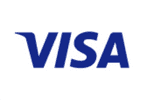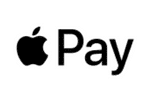Renting out your property is a significant investment, and it’s essential to have a well-written rental agreement in place that benefits both parties. One way to ensure your rental agreement is flexible enough to meet your needs and the needs of your tenants is by customizing it. In this article, we will discuss the benefits of having a flexible rental agreement and how to customize it to suit your specific needs.
Benefits of Flexible Rental Agreements
Attract More Tenants: With a flexible rental agreement, you can attract a wider range of tenants. Some tenants may require short-term leases, while others prefer long-term agreements. By providing flexible options, you can appeal to a broader range of potential renters.
Increased Tenant Satisfaction: Customized rental agreements can help build stronger tenant-landlord relationships, leading to increased tenant satisfaction. By accommodating specific tenant needs, you can build trust and loyalty, and tenants are more likely to renew their lease and recommend your property to others.
Tailored Rental Rates: By customizing your rental agreement, you can tailor rental rates based on specific factors, such as the length of the lease, the time of year, or the condition of the property. This flexibility allows you to adjust pricing to meet market demand and optimize your rental income.
Reduced Vacancy Rates: With flexible rental agreements, you can reduce vacancy rates by attracting more tenants and accommodating their needs. You can also provide shorter notice periods for lease renewal, making it easier for tenants to stay in your property for an extended period.
How to Customize Your Rental Agreement
Establish the Rental Term: Determine the rental period that works best for both you and the tenant. Decide if you want to offer short-term rentals, long-term rentals, or month-to-month leases.
Define the Rent Amount: Customize your rental agreement by defining the rent amount and any other fees or deposits. You can also include a rent escalation clause that adjusts the rent based on inflation or market conditions.
Outline Maintenance Responsibilities: Customizing your rental agreement includes defining maintenance responsibilities for both you and the tenant. Be specific about who is responsible for repairs and maintenance, and outline how these responsibilities will be handled.
Include Pet Policies: If you allow pets in your rental property, it’s essential to include a pet policy in your rental agreement. Outline any restrictions or requirements, such as additional fees or deposits, and specify any limitations on the type or number of pets allowed.
State Tenant Rights: Customized rental agreements should state tenant rights, including privacy, quiet enjoyment, and maintenance responsibilities. Tenants must understand their rights and responsibilities to avoid any confusion or misunderstandings.
In conclusion, flexible rental agreements are an excellent way to customize your rental agreements to meet your specific needs while accommodating the needs of your tenants. By providing flexible options, you can attract more tenants, increase tenant satisfaction, and reduce vacancy rates. Customizing your rental agreement allows you to tailor rental rates, define maintenance responsibilities, outline pet policies, and state tenant rights. As a landlord, it’s essential to prioritize customization and flexibility to create a positive renting experience for both you and your tenants.











